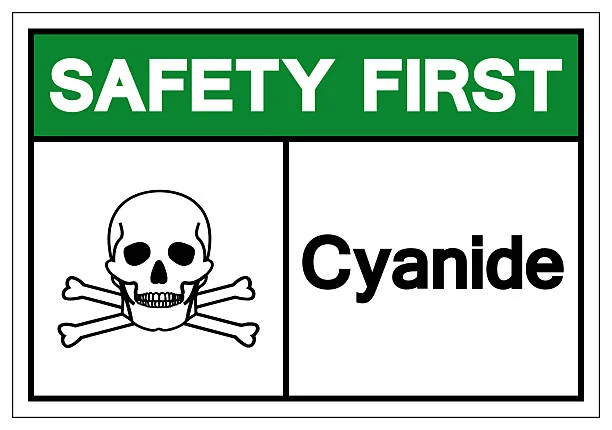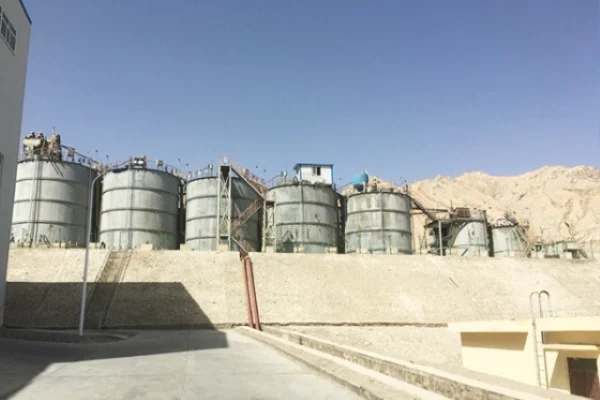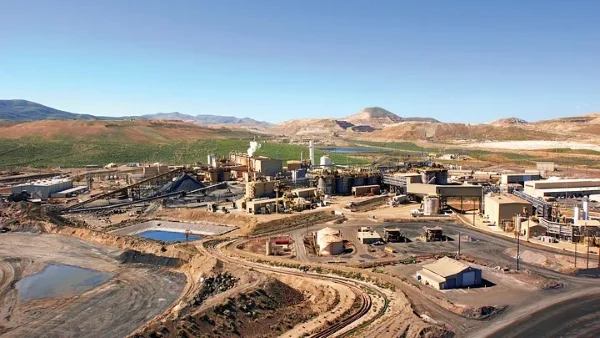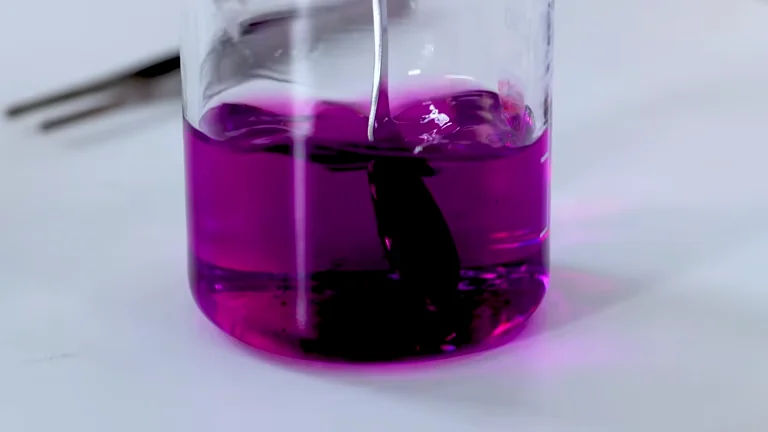
Introduction
The extraction of gold and silver from ores is a complex and crucial process in the mining industry. Cyanidation has long been a dominant method for this purpose. However, continuous efforts are being made to optimize the process to improve the leaching rates of precious metals and enhance overall efficiency. One such approach that has shown promise is the use of ammonia in the oxygen-rich cyanidation process. This article delves into how ammonia can play a significant role in boosting the leaching rates of gold and silver.
The Basics of Cyanidation
Cyanidation is based on the principle that weak solutions of sodium or potassium cyanide have a preferential dissolving action on small particles of metallic gold and silver over other materials typically found in gold ores. In this process, when fresh surfaces of gold are exposed to cyanide in an aqueous solution containing free oxygen, a chemical reaction occurs that forms a gold cyanide compound along with a hydroxide.
The process requires careful control of several factors. For instance, the strength of the cyanide solution is crucial. Usually, a solution strength of about one pound of cyanide (KCN equivalent) to a ton of solution (water) is used, as this has been found to be sufficiently strong for most straight cyanide circuits. Experimental work has demonstrated that this strength provides maximum dissolving power. Additionally, a weak solution is less affected by cyanicides (minerals that can have deleterious effects on the cyanidation process), and the danger of poisoning from fumes formed by evaporation in hot weather is reduced.
Temperature also plays a vital role. In cold climates, solutions are often heated to around 70 °F to maintain efficient dissolving action. Above this temperature, the loss of cyanide by decomposition becomes a significant concern. Theoretically, gold dissolves fastest in a solution at a temperature of 138 °F.
Role of Ammonia in the Oxygen - Rich Cyanidation Process
Complexation with Metal Ions
Ammonia can form complex compounds with various metal ions present in the ore. In the context of gold and silver extraction, it can interact with copper ions, which are commonly found in many gold ores. Copper can consume cyanide and interfere with the leaching of gold and silver. By forming copper - ammonia complexes, ammonia reduces the competition for cyanide ions, making more cyanide available for the dissolution of gold and silver. As a result, the presence of ammonia helps to maintain a higher concentration of free cyanide ions in the solution, which is beneficial for the leaching of gold and silver.
Influence on the Electrochemical Environment
Ammonia can also alter the electrochemical environment of the leaching system. It can affect the redox potential of the solution, which in turn impacts the oxidation and dissolution of gold and silver. In an oxygen - rich environment, the presence of ammonia can enhance the activation of oxygen molecules. This enhanced oxygen activation promotes the oxidation of gold and silver to their respective cyanide complexes. For instance, in the case of gold, the reaction pathway might be modified in a way that facilitates the formation of the relevant gold cyanide complex more efficiently.
Improvement in Mineral Surface Properties
Ammonia can interact with the surface of the minerals in the ore. Some minerals that are difficult to leach directly can have their surface properties modified by ammonia. This modification can make the surface more reactive towards cyanide ions, thus improving the overall leaching efficiency. For example, certain silver - bearing minerals might have a surface coating that inhibits the access of cyanide ions. Ammonia can react with this coating or adsorb on the mineral surface, changing its charge and chemical reactivity, and allowing cyanide ions to more effectively react with the silver within the mineral.
Case Studies and Practical Applications
In a practical application at a gold - silver mine, the use of the side - grinding - while - leaching and oxygen - rich cyanidation process was combined with the addition of ammonia. Under the condition that the original production process remained unchanged, the addition of an appropriate amount of ammonia in the first - stage grinding was carried out. The results were remarkable. Compared to the situation without ammonia addition, the gold cyanidation leaching rate increased by 0.47%, the silver leaching rate increased by 5.33%, and the copper leaching rate decreased by 6.50%. This not only enhanced the recovery of precious metals but also reduced the dissolution of copper, which is often an unwanted side - effect as copper can consume cyanide and complicate the subsequent metal recovery processes.
In another study on a specific type of gold - silver ore, the addition of ammonia in the oxygen - rich cyanidation process led to a significant improvement in the leaching kinetics. The time required to reach a high level of gold and silver leaching was reduced. This not only increased the throughput of the leaching process but also saved energy and resources in the long run.
Optimization and Considerations
While ammonia shows great potential in enhancing gold and silver leaching rates in the oxygen - rich cyanidation process, several factors need to be optimized. The concentration of ammonia added is critical. Too little ammonia may not have a significant impact on complexation, electrochemical environment, or mineral surface modification. On the other hand, an excessive amount of ammonia can lead to increased costs, potential environmental issues, and may even disrupt the overall chemical balance of the leaching system.
The pH value of the leaching solution also needs to be carefully controlled. Ammonia is a weak base, and its addition can affect the pH of the solution. Since the cyanidation process is sensitive to pH, maintaining an optimal pH range (usually around 10 - 11) is essential for the proper functioning of the cyanide ions and the overall reaction kinetics.
Furthermore, the compatibility of ammonia with other reagents used in the process, such as lime (which is often added to adjust the pH and prevent the formation of hydrogen cyanide gas), needs to be considered. Ensuring that all the chemical reactions in the leaching system work in harmony is crucial for maximizing the leaching rates of gold and silver.
Conclusion
The use of ammonia in the oxygen - rich cyanidation process offers a viable and effective way to enhance the leaching rates of gold and silver. Through complexation with metal ions, modification of the electrochemical environment, and improvement of mineral surface properties, ammonia can significantly improve the efficiency of precious metal extraction. However, careful optimization of parameters such as ammonia concentration, pH control, and compatibility with other reagents is necessary to fully realize the benefits of this approach. As the mining industry continues to seek more efficient and sustainable ways to extract precious metals, the role of ammonia in cyanidation processes is likely to receive even more attention and further research.
- Random Content
- Hot content
- Hot review content
- Anhydrous Ammonia 99% Liquid
- Triethanolamine(TEA)
- lithium Carbonates 99.5% Battery Level or 99.2% Industry grade 99%
- Cupric Chloride 98%
- Caprylic/capric triglyceride
- 99.5% Pure Ethylene Glycol Mono Ethylene Glycol MEG EG
- Food Additive E330 Citric acid monohydrate
- 1Discounted Sodium Cyanide (CAS: 143-33-9) for Mining - High Quality & Competitive Pricing
- 2China's New Regulations on Sodium Cyanide Exports and Guidance for International Buyers
- 3Sodium Cyanide 98% CAS 143-33-9 gold dressing agent Essential for Mining and Chemical Industries
- 4International Cyanide(Sodium cyanide) Management Code - Gold Mine Acceptance Standards
- 5China factory Sulfuric Acid 98%
- 6Anhydrous Oxalic acid 99.6% Industrial Grade
- 7Oxalic acid for mining 99.6%
- 1Sodium Cyanide 98% CAS 143-33-9 gold dressing agent Essential for Mining and Chemical Industries
- 2High Quality 99% Purity of Cyanuric chloride ISO 9001:2005 REACH Verified Producer
- 3Zinc chloride ZnCl2 for High Molecular Weight Polymers Initiator
- 4High Purity · Stable Performance · Higher Recovery — sodium cyanide for modern gold leaching
- 5High Quality Sodium Ferrocyanide / Sodium Hexacyanoferr
- 6Gold Ore Dressing Agent Safe Gold Extracting Agent Replace Sodium Cyanide
- 7Sodium Cyanide 98%+ CAS 143-33-9











Online message consultation
Add comment: